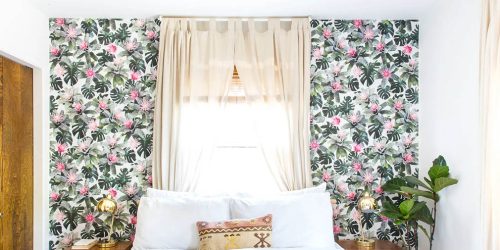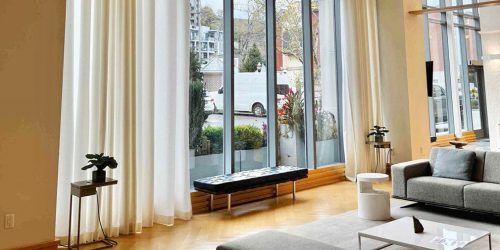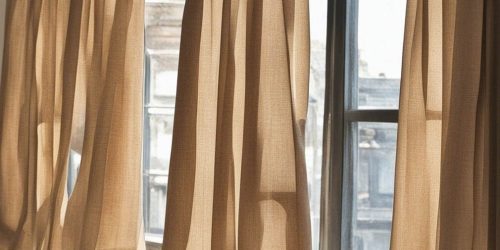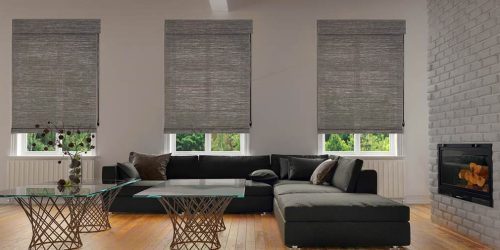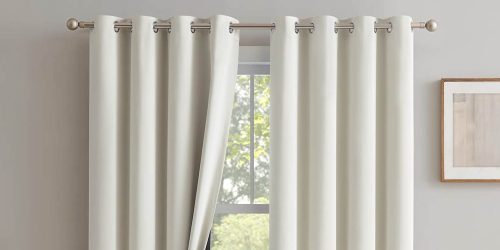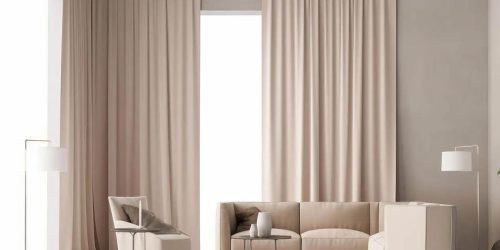Curtains vs. Blinds: Which Window Treatment is Right for Your Home?
When it comes to window treatments, curtains and blinds are the two most popular options. Choosing between them can seem overwhelming, but each offers distinct benefits and suits different spaces, needs, and styles. Having recently redecorated my home, I navigated through the pros and cons of both curtains and blinds in great detail, so I can share my insights. This guide will help you make the right choice based on functionality, aesthetics, cost, and your personal preference.
1. Understanding the Basics: Curtains vs. Blinds
Curtains are fabric panels that hang from rods above a window. They come in a wide variety of materials, lengths, patterns, and colors. They can be heavy and lined for blocking light or sheer for allowing soft light to filter in. The ability to drape fabric allows for a lot of flexibility in style, from casual to formal, depending on the fabric and design.
Blinds, on the other hand, are structured window coverings that are made up of slats, which can be tilted open and closed, or raised and lowered to control light and privacy. Blinds are typically made from materials like wood, vinyl, or metal. Their minimalist look suits modern and clean spaces, and they often come in horizontal or vertical styles.
2. Aesthetic Appeal: Creating the Right Ambiance
One of the key factors I considered in my decision-making process was the aesthetic appeal. Curtains have a distinct advantage in their ability to transform a room. If you want to add warmth, texture, and softness, curtains are a great option. They can dramatically alter the feel of a space based on fabric and color choices. For example, heavy velvet curtains bring luxury and elegance to a formal living room, while lightweight linen drapes create an airy, relaxed vibe in a bedroom or dining area.
Blinds, on the other hand, offer a sleek, contemporary appearance. They’re typically associated with a modern, minimalist look, making them perfect for spaces where simplicity is key. In my own home, I opted for clean white blinds in my kitchen and bathroom because they provided a crisp, uncluttered look that complemented the room’s more functional feel.
3. Light Control: From Natural Glow to Total Darkness
Another important consideration is how much light you want to control. If you’re someone who loves natural light and wants flexibility in adjusting how much light enters your room, blinds are the superior choice. The slats on blinds give you precise control over how much light you let in. Whether it’s a sunny morning or late afternoon, you can adjust the slats to get just the right amount of natural light. Blinds also work well in places where full privacy is a priority, like bathrooms or street-facing windows.
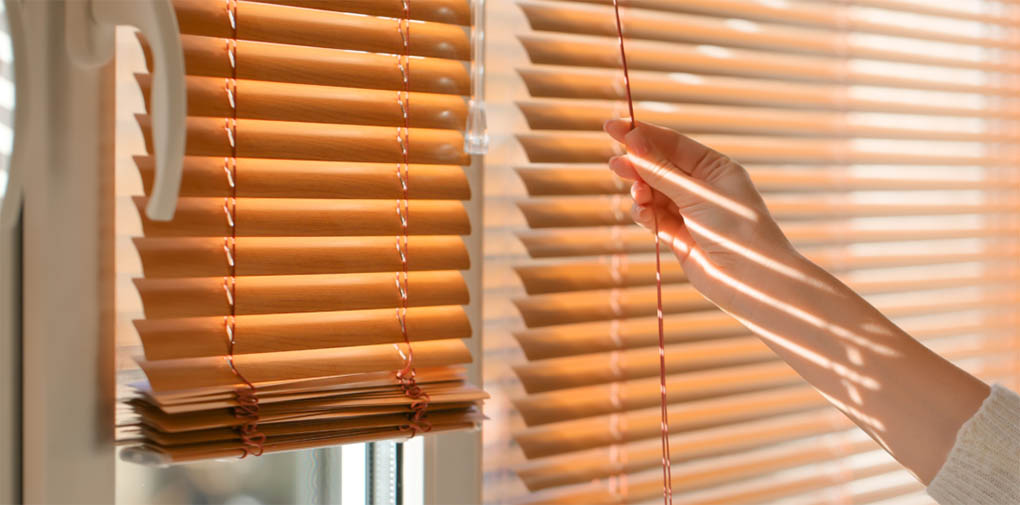
Curtains provide less fine-tuned control but can be just as effective in certain rooms. If you’re looking for total blackout for a bedroom or media room, then heavy curtains with a blackout lining are perfect. I personally chose thick blackout curtains for my bedroom, as they provide complete darkness, even during the day. For living areas where soft, filtered light is welcome, sheer or semi-sheer curtains can give a beautiful glow to a room without compromising privacy.
4. Privacy: Keeping Prying Eyes Away
Privacy is another critical aspect when choosing window treatments. While both curtains and blinds offer privacy, the type of privacy they provide can differ significantly.
Blinds allow you to tilt the slats, giving you privacy while still letting in natural light. This is especially beneficial if your window faces a busy street or a neighbor’s home. Blinds provide a high level of control over how much you want to block the outside view without darkening the room completely.
Curtains, on the other hand, are either open or closed. While you can use sheer curtains during the day to let in light and still maintain a level of privacy, at night you might need to close heavier drapes to fully block out prying eyes. If privacy is a major concern, layering sheer curtains with blackout drapes could give you the best of both worlds.
5. Insulation and Energy Efficiency: Keeping Your Home Comfortable
One thing I didn’t initially consider was the impact window treatments could have on energy efficiency. Curtains, particularly heavier ones, can actually help insulate a room. During the winter months, thick curtains can block out drafts and keep the warmth in, which is great for cutting down on heating costs. In the summer, these same curtains can prevent the sun’s heat from warming up your space too much.
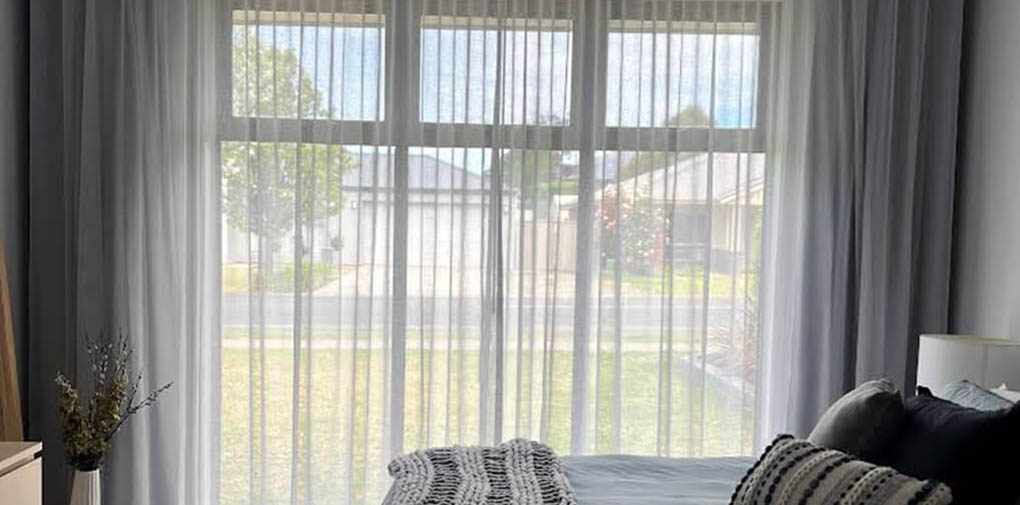
Blinds, on the other hand, offer less insulation. While they do block direct sunlight, they don’t provide the same degree of thermal protection as curtains. However, there are specialized insulating blinds, such as honeycomb or cellular blinds, which are designed specifically to offer energy efficiency. I installed honeycomb blinds in my sunroom to reduce heat gain during the summer, and they’ve been very effective.
6. Maintenance: How Much Effort Do You Want to Invest?
If ease of maintenance is important to you, then blinds are typically the easier option. Dusting blinds is a quick and easy task. With a microfiber cloth or a vacuum cleaner attachment, you can clean them in minutes. However, if you’re using metal or plastic blinds, they may require more frequent cleaning as they can attract dust quickly.
Curtains, depending on the material, may require more care. Light curtains made from delicate fabrics might need to be hand-washed or dry-cleaned, while others can be machine washed. I found that curtains in high-traffic areas like kitchens or living rooms need more frequent attention, especially if they’re exposed to cooking fumes or dust. On the other hand, blinds are more practical for rooms like kitchens and bathrooms, where fabric curtains could easily get dirty or absorb moisture.
7. Cost: Budgeting for Window Treatments
The cost of window treatments can vary widely depending on the material, size, and customization. In general, blinds are more affordable than curtains. Standard vinyl or aluminum blinds can be very budget-friendly and easy to install on your own. Custom blinds, however, especially those made from wood or designed with special features like motorization, can become more expensive.
Curtains, particularly when custom-made, can get pricey. The cost of fabric, lining, and curtain rods add up quickly. However, if you opt for off-the-shelf curtains from a home store, you can still achieve a stylish look without breaking the bank. When I redid my living room, I found some gorgeous, reasonably-priced curtains that fit my decor perfectly, without needing a custom order.
8. Room-by-Room Recommendations
After trying both curtains and blinds throughout my home, I’ve found that the right window treatment really depends on the room. Here are my personal recommendations based on functionality and style:

- Living Room: Curtains are a great choice for living rooms, adding warmth and elegance. I chose a neutral fabric to complement my décor and lined them for better light control.
- Bedroom: Blackout curtains are ideal for bedrooms to ensure a good night’s sleep. I found that layering sheer curtains with blackout ones offers flexibility between day and night.
- Bathroom: Blinds work best in bathrooms due to their moisture-resistant materials. I installed faux wood blinds for privacy and a clean look.
- Kitchen: Blinds are more practical in the kitchen due to their easy maintenance. Vinyl or aluminum blinds are easy to clean and resist cooking fumes.
9. Finding the Perfect Window Treatment for Your Home
Ultimately, the decision between curtains and blinds depends on your specific needs, style preferences, and the room in question. Curtains provide a soft, elegant look with the added benefit of insulation, making them perfect for bedrooms and living spaces. Blinds, with their sleek appearance and precise light control, are ideal for functional spaces like kitchens and bathrooms.
By understanding the advantages of both, you can make an informed decision that enhances both the look and functionality of your home. Whether you’re looking for cozy warmth with drapes or the clean lines of blinds, choosing the right window treatment can truly transform your living space.
